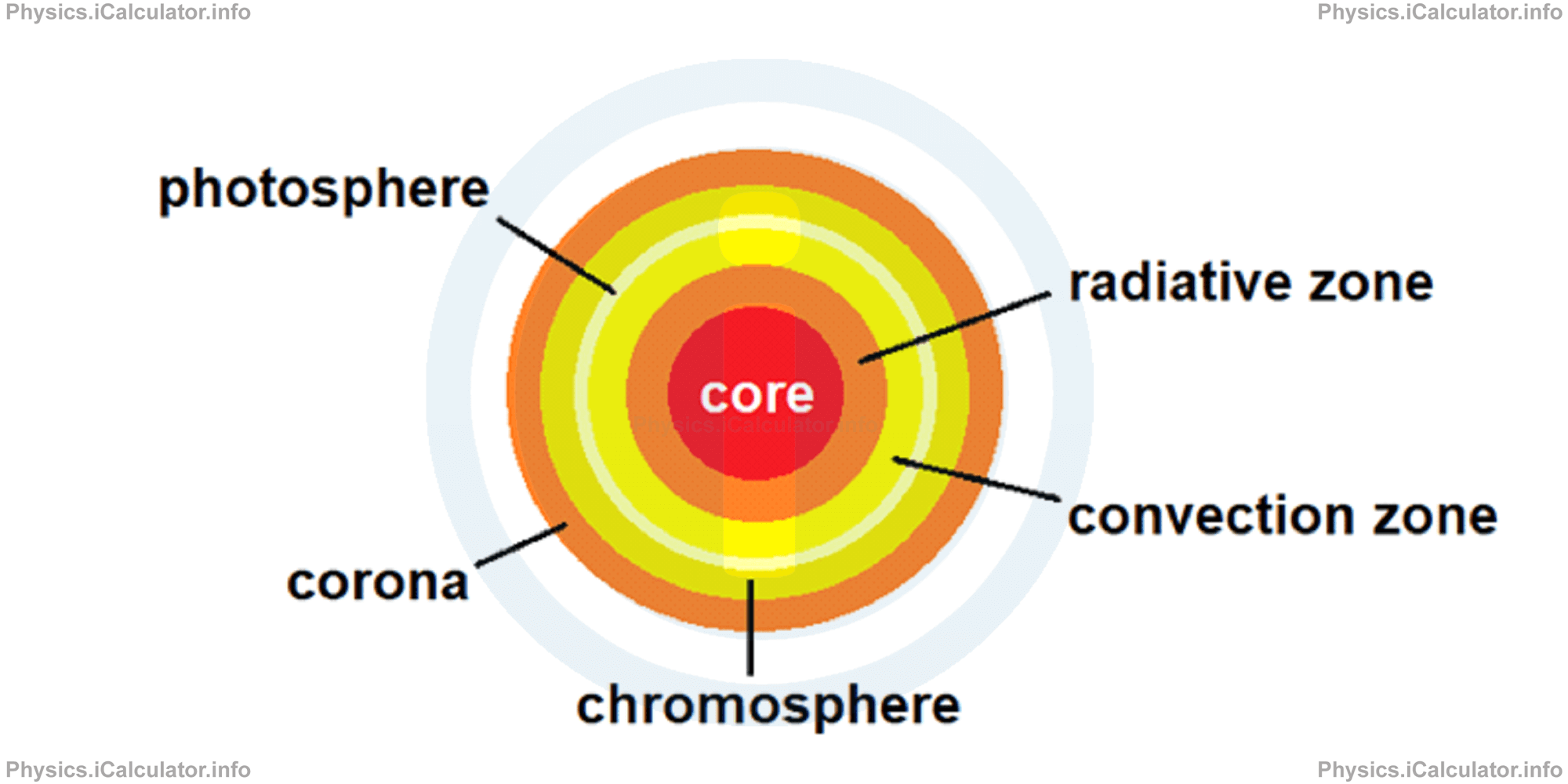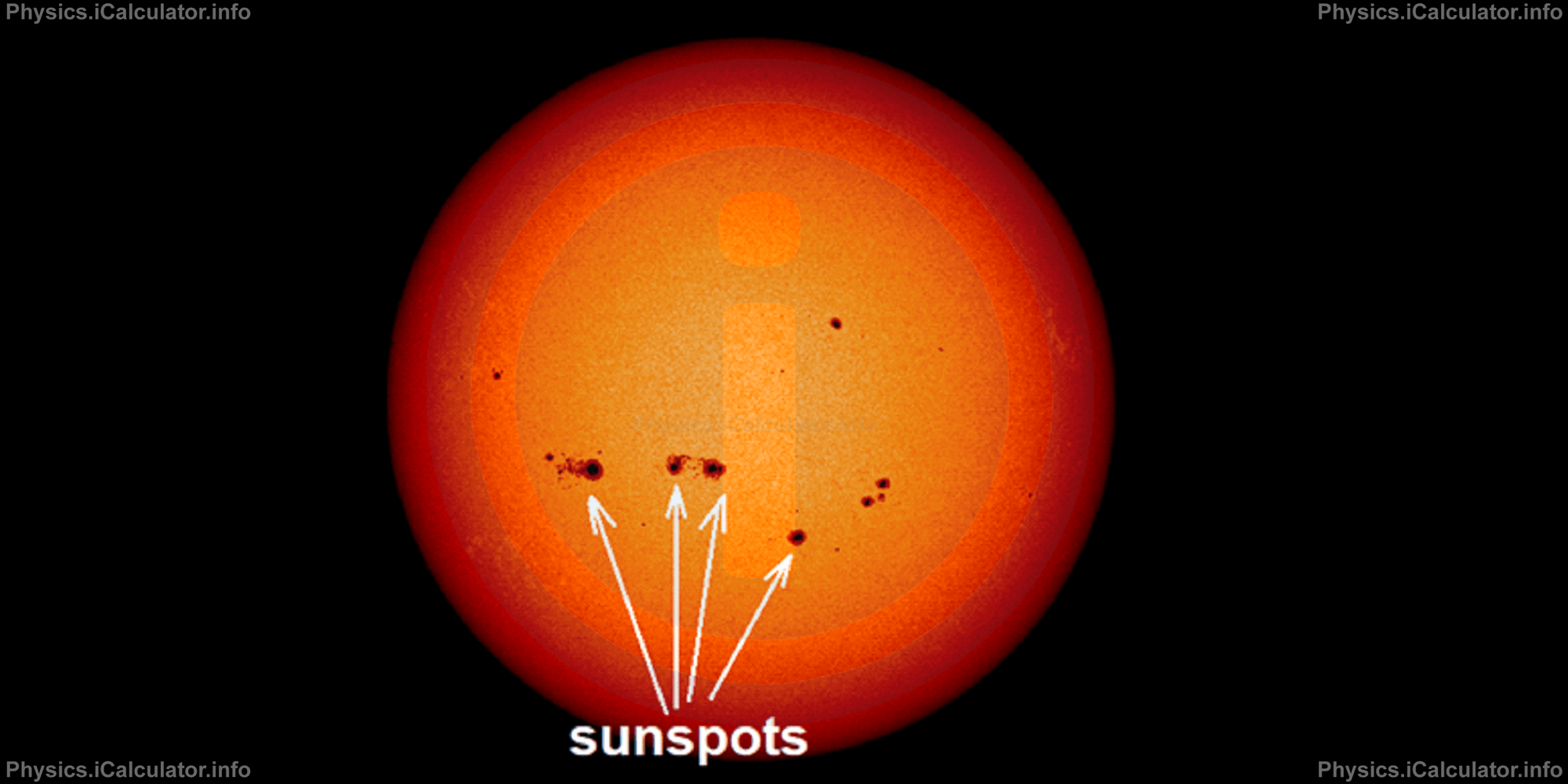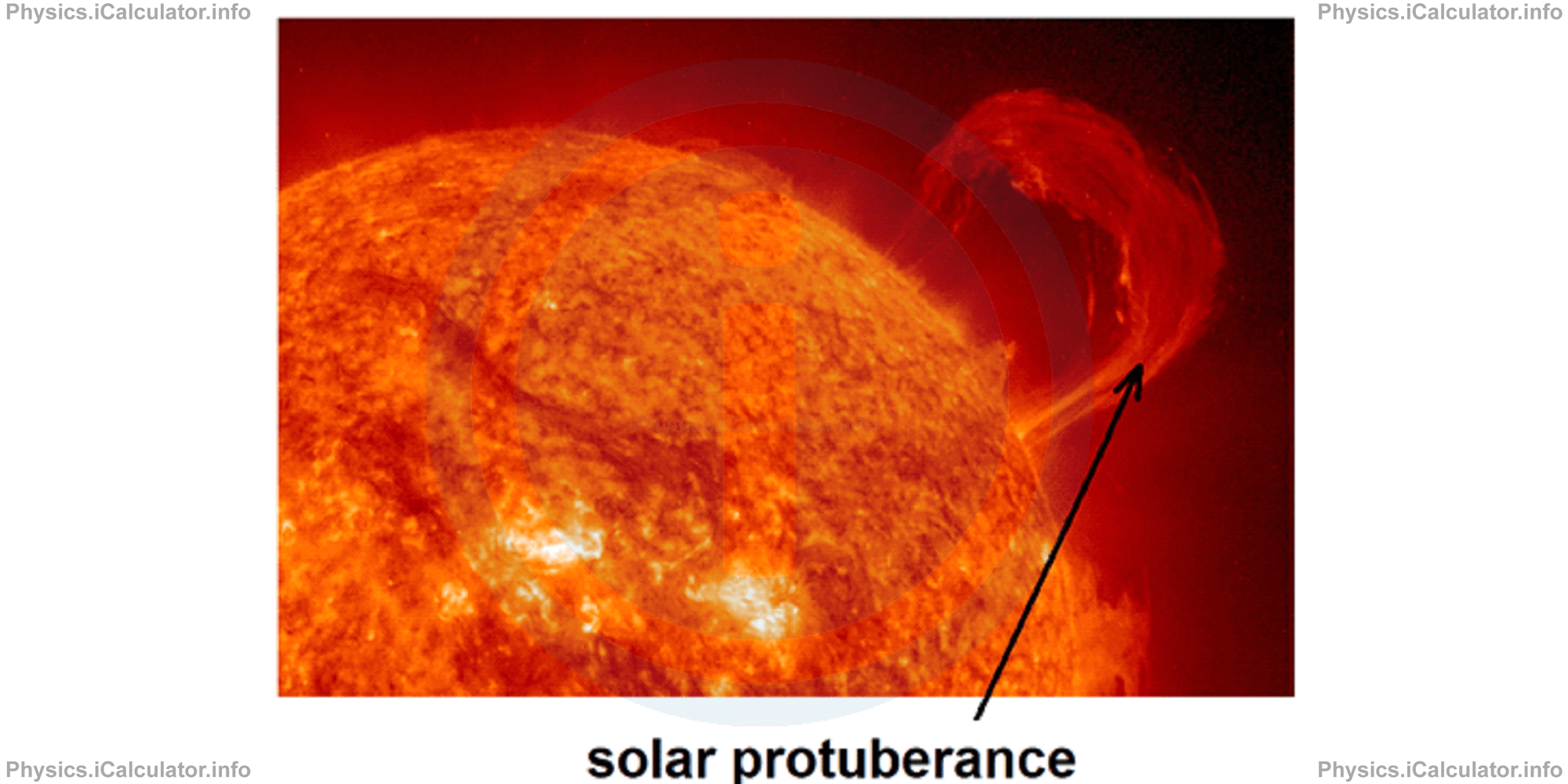Menu
Physics Lesson 22.2.4 - Structure of the Sun
Please provide a rating, it takes seconds and helps us to keep this resource free for all to use
Welcome to our Physics lesson on Structure of the Sun, this is the fourth lesson of our suite of physics lessons covering the topic of Sun and Planetary Motion, you can find links to the other lessons within this tutorial and access additional physics learning resources below this lesson.
Structure of the Sun
The Sun structure is illustrated in the figure below.

From this figure, you can see that the Sun's core is part of radiative zone. This zone lies from centre to 3/4 of the Sun's radius, where temperature and matter density are so high that they only allow energy transmission by means of radiation, through Brownian motion. The last (outer) quarter contains the convection zone in which energy transmission is also carried out through gas currents.
The Sun is not a regular body; it has no defined surface. As stated earlier, it is a fiery orb made of very hot gases (plasma). The "surface" visible from the Earth is known as photosphere. It is a 600 km thick layer with an average temperature of 5800 K. The Photosphere has a granular appearance because of convection currents that move up and down continuously. The solar matter extends up to photosphere; the other two outer layers (chromosphere and corona) are part of Sun's atmosphere and not of its inner material structure. Hence, practically, when calculating the dimensions of the Sun, we consider the part from core to photosphere.
Sunspots represent an interesting phenomenon that occur in the photosphere. They are darker regions than the other parts of the Sun due to the lower temperature (1000 K - 1500 K colder than the neighboring regions). Their presence is explained through magnetic fields present in the Sun. The number of such spots varies periodically every 11.2 years. When the number of sunspots is at maximum, the Sun is at peak of its magnetic activity.

As stated earlier, the Sun's atmosphere lies above chromosphere and solar corona, including these two regions as well. It is very difficult to observe the solar atmosphere in normal sunny days due to the strong light emitted by the photosphere, which obscures all the other light sources. Scientists prefer to make their observations of the Sun's atmosphere during solar eclipses, when the intensity of solar radiation decreases drastically. During these events the photosphere is covered by the Moon and only the Sun's atmosphere is visible.
Chromosphere - which represents the colored layer of the Sun - has a red ring shape. It is about 6000 km thick and has a temperature of 7000 K.
Corona on the other hand, extends up to millions of km away from the Sun, or several times the Sun's radius. However, its density is very low. The temperature of corona reaches a value of 2 million Kelvin degree.
Solar protuberances are another phenomenon observed in the Sun. They are difficult to see in photos but they are more visible in high-resolution videos of the Sun. Solar protuberances are rose-colored masses on the limb of the sun which are seen to extend beyond the edge of the moon during a solar eclipse. They may be observed with a spectroscope on any clear day. They are also known as solar prominences.

Solar protuberances are flame bolts flowing out from the chromosphere and returning back into the chromosphere again. This occurs due to the effect caused by the Sun's magnetic field.
The Sun revolves around its own axis. The presence of sunspots makes the study of this phenomenon easier. The solar self-rotation period is 24.47 days at the equator and almost 38 days at the poles. The average rotation is 28 days.
The Sun is a typical representative of a star class known as main-sequence stars, which we will discuss in the upcoming tutorials. This class includes most of stars existing in the universe.
You have reached the end of Physics lesson 22.2.4 Structure of the Sun. There are 10 lessons in this physics tutorial covering Sun and Planetary Motion, you can access all the lessons from this tutorial below.
More Sun and Planetary Motion Lessons and Learning Resources
Whats next?
Enjoy the "Structure of the Sun" physics lesson? People who liked the "Sun and Planetary Motion lesson found the following resources useful:
- Sun Structure Feedback. Helps other - Leave a rating for this sun structure (see below)
- Cosmology Physics tutorial: Sun and Planetary Motion. Read the Sun and Planetary Motion physics tutorial and build your physics knowledge of Cosmology
- Cosmology Revision Notes: Sun and Planetary Motion. Print the notes so you can revise the key points covered in the physics tutorial for Sun and Planetary Motion
- Cosmology Practice Questions: Sun and Planetary Motion. Test and improve your knowledge of Sun and Planetary Motion with example questins and answers
- Check your calculations for Cosmology questions with our excellent Cosmology calculators which contain full equations and calculations clearly displayed line by line. See the Cosmology Calculators by iCalculator™ below.
- Continuing learning cosmology - read our next physics tutorial: The Moon's Movement. Eclipses. Calendars
Help others Learning Physics just like you
Please provide a rating, it takes seconds and helps us to keep this resource free for all to use
We hope you found this Physics lesson "Sun and Planetary Motion" useful. If you did it would be great if you could spare the time to rate this physics lesson (simply click on the number of stars that match your assessment of this physics learning aide) and/or share on social media, this helps us identify popular tutorials and calculators and expand our free learning resources to support our users around the world have free access to expand their knowledge of physics and other disciplines.